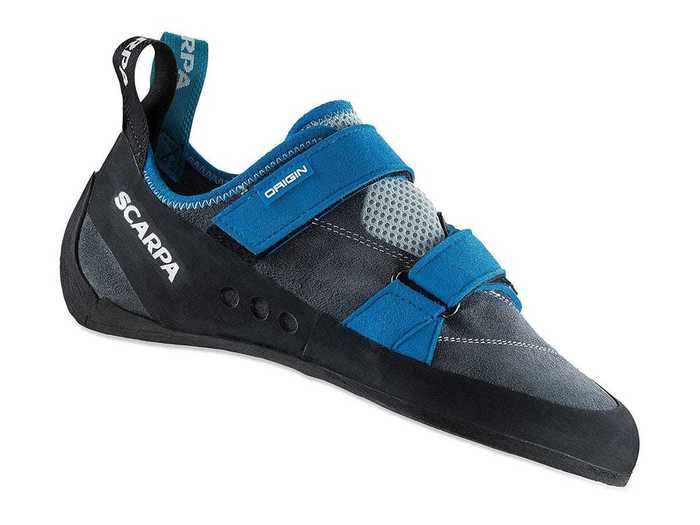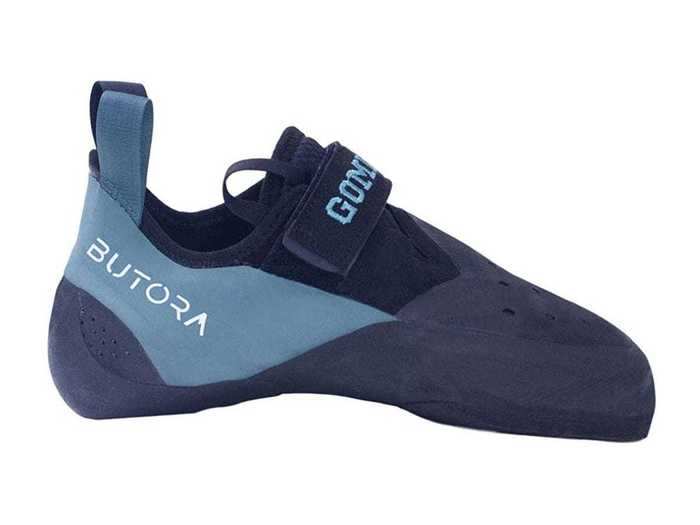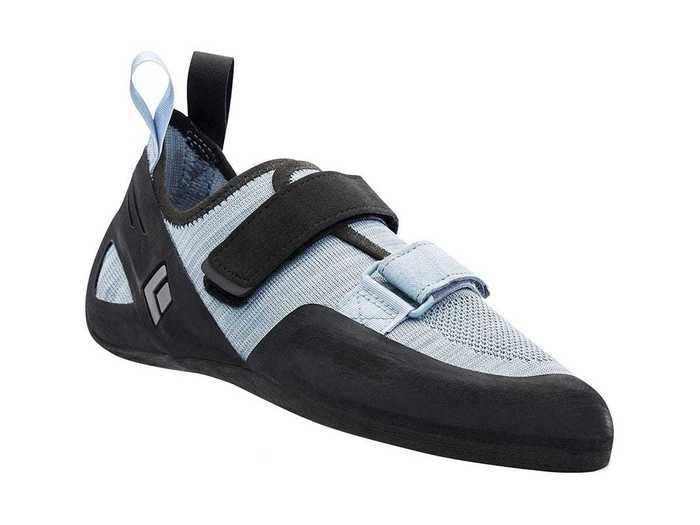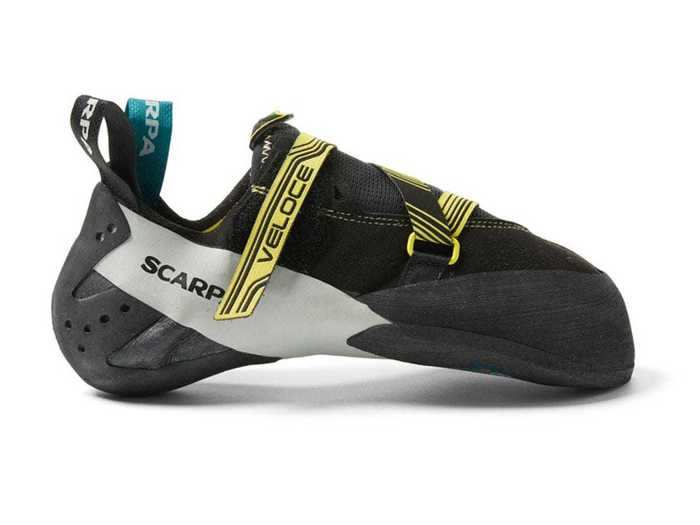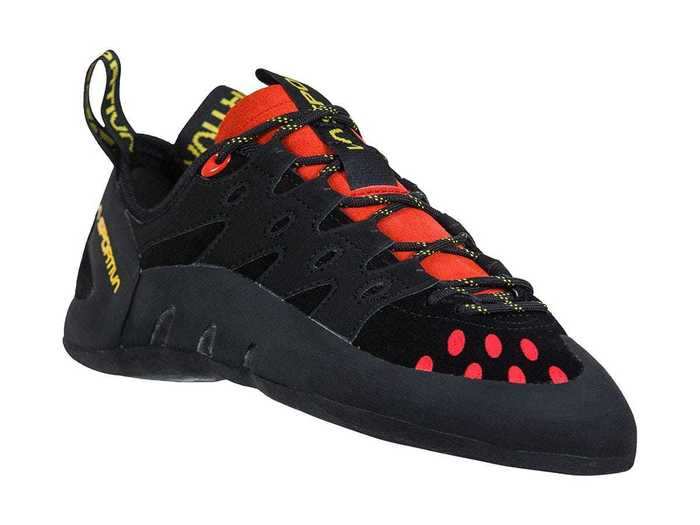- Rock climbing is a great sport with a relatively low barrier to entry that doesn't require spending hundreds of dollars to get started.
- Most rock climbing gyms make customers abide by extra safety precautions and won't rent shoes, making now the right time to invest in your own pair.
- Comfort is the most important factor when buying your first pair of climbing shoes — make sure you pick out the correct fit before purchasing and pay extra attention to return policies.
- Our top pick, the Scarpa Origin Climbing Shoe, is designed for all-day comfort, costs less than $100, and features an easy-to-use Velcro system for easy in and out.
Climbing shoes are one of the first pieces of gear you should invest in if you're diving into the sport of rock climbing. If you're used to renting from a gym, buying a pair of shoes pays for itself in as little as a couple of months — not to mention the fact they're more sanitary than any rental.
It's worth pointing out that most gyms aren't even renting equipment right now due to COVID-19, so opting for a pair of your own pair isn't just a smart investment, it might be your own course of action if you want to climb.
Since you'll go through countless climbing shoes in your journey with the sport, your first pair should be both comfortable and affordable. My first pair of climbing shoes were found in an REI garage sale bin for less than $20 — it didn't matter how much they cost, what mattered is that they fit me properly. I wore those shoes for several years afterward.
How to shop for climbing shoes
Climbing shoes are meant to fit like a sock with a minimal gap around the heel and ankle, so it's highly important to find a last that fits right. Climbing shoes will fit tighter than a normal pair of street shoes, so you'll most likely need a size smaller than you're used to buying.
I highly recommend trying on a pair of climbing shoes before buying and also making sure you're buying from a retailer that allows returns in the event it doesn't fit right after a few uses. I buy from REI whenever possible because of its generous return policy that allows you to return something for up to one year for any reason, no questions asked (aside from general wear and tear).
Generally, beginners should look for flatter shoes that allow for more room in the toe box and won't cramp your foot like more aggressively downturned shoes. This means you can wear them for longer periods of time and can get used to the feeling of your feet in a climbing shoe.
You'll also see most climbing shoes marketed to men or women but the biggest difference between the two is volume. If you have a higher volume foot, I'd recommend looking at men's shoes and vice versa for women's. Sometimes you'll even see shoes labeled as high volume and low volume.
As you progress in your technique, you might want a more aggressive shoe that allows you to stand on small footholds more accurately and get more power as you stand up. I strongly suggest not buying a shoe that's more advanced than you are, though — you want to be comfortable above all else when you're beginning. A new sport won't be much fun if you're in pain all the time.
Here are the best beginner climbing shoes:
- Best beginner climbing shoes overall: Scarpa Origin Climbing Shoe
- Best climbing shoes for bouldering: Butora Gomi Climbing Shoe
- Best climbing shoes for sport climbing: Black Diamond Momentum Climbing Shoe
- Best climbing shoes for an indoor gym: Scarpa Veloce Climbing Shoe
The best overall beginner climbing shoes
Source TK
The
Scarpa Origin climbing shoe is flat-lasted for all-day comfort and is at an affordable price so you can focus on your technique, not your bank account.
When first getting into climbing, a flat shoe is going to feel the best and won't cause cramping after a few climbs. I recommend the Origin's for beginners thanks to the foot-friendly design and quick velcro closure system. Lace systems are more adjustable but velcro is easier to use so you can take your shoes off quickly after a climb.
The rubber on this shoe is soft but still provides a substantial toe edge for smearing and gripping small foot holds. Compared to other shoes I've tested, the Origins have a shorter break-in period that's more ideal for beginners thanks to the mix of leather and suede materials. The tongue of the shoe is heavily padded to help resist foot cramping and makes the shoe more comfortable to wear for longer periods of time.
If you're looking to save an extra buck, it's easy to find previous years models of the Origin on sale online. But no matter what model you buy, the small price tag allows you to save up for a more advanced pair when the time is right. One thing to note is that if you progress quickly in your technique, the flat sole of the Origin might prove to not be aggressive enough over time.
Pros: Affordable, flatter sole that's ideal for beginners, quick velcro closure design.
Cons: Possibility of outgrowing the shoe quickly, not ideal for toe or heel hooks.
The best climbing shoes for bouldering
source TK
With an abundance of rubber coverage on the
Butora Gomi climbing shoe, this model is ideal for new climbers with an affinity for bouldering.
The Butora Gomi is the most aggressive shoe on this list with a substantial downturned toe that makes it ideal for bouldering and steeper sport climbing. Still, it's less aggressive and softer than more advanced bouldering shoes and is a great intro into the world of downturned toe boxes. This shoe comes in a wide fit (Seagrass) and narrow fit (Pink) so you can buy the shoe that best works for you.
The front of the shoe is covered in a thin layer of super sticky rubber that's great for toe hooks and landing dynamic competition-like moves on volumes. The heel cup is also encased in a healthy layer of rubber and feels secure when I need to trust it for a heel hook. I appreciate the sensitivity these shoes provide compared to stiffer shoes on the market (like La Sportiva's Solutions) so I can trust exactly where I'm placing my feet.
With just one velcro closure strap, there isn't much room to adjust these shoes so make sure you're happy with the size you buy. Since these shoes are more aggressive, they're a great option for someone who wants a shoe that grows with their technique. They're more expensive than other shoes on this list, so they're not an ideal choice for someone who wants to save a little money or is unsure about their passion for climbing.
Pros: Great for heel and toe hooks, ideal for shorter boulder climbs, soft rubber.
Cons: On the pricier side of beginner shoes, minimally adjustable.
The best climbing shoes for sport climbing
source tk
If you're looking for a shoe you can wear route after route, the
Black Diamond Momentum climbing shoe is perfect for days at the gym or your local crag.
Perfect for beginners who prefer to be on a rope, the Black Diamond Momentum climbing shoes are neutral enough to allow your toes to lay flat inside the shoe — minimizing the possibility of cramping or blistering. The knit fabric uppers conform to your feet and provide increased breathability compared to leather or suede but the front end of the shoe is lined with microfiber which helps the shoe resist stretching out.
The rubber around the mid-sole is soft and flexible which is more comfortable over long time periods of wear compared to stiffer models I tested. The velcro closure system utilizes two adjustable straps that oppose each other which I've found to help with a better fit. Looking to go animal-product free? Black Diamond even makes these in a vegan model for a comparable price.
The toe rubber on the Momentum isn't ideal for smearing or other technical holds, but I found it to be good enough for climbing 5.9 or 5.10 routes. There is minimal rubber coverage overall on the shoe so I wouldn't recommend it for crack climbing or other climbs where you need to rely on the shoe for heel or toe hooks.
Pros: Comfortable enough to run laps on the auto-belay, competitive price.
Cons: Not ideal for overhanging climbs, minimal rubber coverage on top of shoe.
The best climbing shoes for an indoor gym
source tk
This indoor-specific design of the
Scarpa Veloce is made for beginner climbers who want a shoe to train in that is comfortable over periods of time without sacrificing performance.
A moderately downturned shoe, the Veloce is an ideal indoor-specific shoe that has great toe rubber coverage for gripping toe hooks. This shoe feels super sensitive compared to other models I tested thanks to the flexible midsole (It's so soft that I'm able to fold the shoe in half with one hand). While a soft shoe isn't ideal for every scenario, I really liked the suppleness of the Veloce and I found it to be more comfortable over a longer period of time.
The toe box is wider than more aggressive models which makes it ideal for beginners and intermediate climbers. I like the simple Z-strap velcro closure design which allows you to adjust the whole shoe with the pull of one strap. Over time, I've found that the strap buckle wore down the strap material a little bit, but it still feels structurally sound.
The interior mesh sock-like tongue adds to the overall compression of the shoe, but it doesn't feel too tight. Since this shoe is meant strictly for indoor climbing, the rubber is very soft and has shown a good amount of wear and tear over time. It should be obvious, but I wouldn't recommend this shoe for outdoor climbing.
Pros: Great for both bouldering or sport climbing, comfortable all day long.
Cons: Very soft rubber that shows signs of wear, more expensive than other beginner models.
The best climbing shoes for multi-pitch climbing
source tk
The
La Sportiva Tarantulace is a time-tested sport climbing shoe that prioritizes comfort and all-day wear which makes it the perfect choice for a multi-pitch beginner climber.
With a neutral foot last and cushioned uppers, the La Sportiva Tarantulace climbing shoes are ideal for beginners looking to tackle long multi-pitch climbs. Over time, I've found lace closure systems to be more reliable than velcro systems which can lose grip and stop working. With lace systems, you can even replace the laces if they start to give out on you and they tend to be more adjustable than velcro.
The tongue is super cushioned and is lined to help manage moisture which adds to the long-wear comfort of the Tarantulace model. I've found that the shoe feels comfortable out of the box against my skin so it didn't take long to break in. This shoe has more rubber under foot than other models I tested which is great for rigidity but it can feel a little cumbersome when going for small footholds or smears.
If you blow a hole in these climbing shoes, they can be resoled which is a great cost-effective option for someone who isn't quite ready to invest in a new pair. This shoe isn't ideal for shorter climbs or boulders since the lacing system doesn't work well for quick on and off use.
Pros: Affordable, lace closure system is highly adjustable, can be resoled.
Cons: Thick rubber soles can be cumbersome, laces make for a longer shoe removal time.

